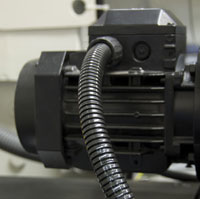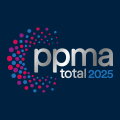
Posted to News on 22nd Jun 2015, 00:00
Understanding UL
A lack of understanding about the use of UL standards could lead to the loss of major export orders for machine builders warns Ian Gibson of Flexicon.

>UL is a major force in the world of standards and you will need to meet its standards if you want to export to an increasing number of large markets, not least the US. Any equipment might be incorporated into machines need to meet its standards.
>UL operates a very transparent and open system for product approval. Anyone can log onto www.ul.com and search under 'certifications' to find the approvals held by a manufacturer for use in both the USA and Canada. But beware because anyone can also report you if they suspect that equipment or components within equipment do not comply, and UL inspectors will then check it. UL takes policing of its standards very seriously.
>It is important to clearly understand how the standard works. There are two types of UL approvals; 'UL Listed' is for any finished product that will be used in its own right and 'UL Recognised' applies to a component or a raw material that is used in a piece of equipment that is itself UL Listed.
>As with any methodology for applying standards, there are pitfalls that you need to be aware of, as shown by looking at the specification of flexible conduit to protect critical power and data. The UL approach is to test the individual components.
>With UL there are different standards for different types of flexible conduit systems, so the first thing that you need to check is the type of flexible conduit used and then apply the relevant standard. For a liquid tight, flexible steel PVC sheathed conduit you need to check that it meets UL360. This standard prescribes inside and outside diameters and focuses on dimensional compatibility. Because this standard specifies the conduit dimensions, manufacturers can supply just conduit, which can then be used with another manufacturer's fittings. This only works because the fittings specified in another standard, UL514B for conduit fittings, are of a compression type that can cope with a wide tolerance.
>This can cause problems because the performance of the system is often dependent on the fitting to conduit joint, particularly for the IP rating, pull off strength and the electrical continuity. The minimum water ingress protection test in UL514B is only similar to IPX4, so the resulting system may not even be liquid tight. In contrast Flexicon's liquid tight conduit systems achieve IP66, 67, 68 and 69.
>Another issue to be aware of is that UL360 requires a copper bonding wire in the wall of conduit up to 40mm up to a certain length, since the American wiring regulations allow flexible conduit to be used as the earth conductor.
>For liquid-tight non-metallic flexible conduit there are similar issues, but the UL1660 standard can be even more confusing. This standard covers three types of conduit. Corrugated conduit (known as type C) does not normally use compression fittings, so a supplier will provide both the conduit and the fittings as a complete system.
>Integral conduit (type B) has a smooth inner and smooth outer tube with internal spiral reinforcement and normally needs metallic or non-metallic liquid tight compression fittings that meet UL514B. Different suppliers can provide the conduit and fitting. Type A flexible conduit in UL1660 is rarely used, but covers layered non-metallic, braided reinforced conduit for particular applications.
>The newest UL standard, UL1696, is actually a system standard that covers both conduits and fittings. It typically covers corrugated polyamide and spirally reinforced PVC with a corrugated outer flexible conduit.
>As an OEM complying with UL, you are ultimately responsible all the way down the supply chain, so a supplier's mistake will have a serious impact on your business. Check the specification of components with care.








